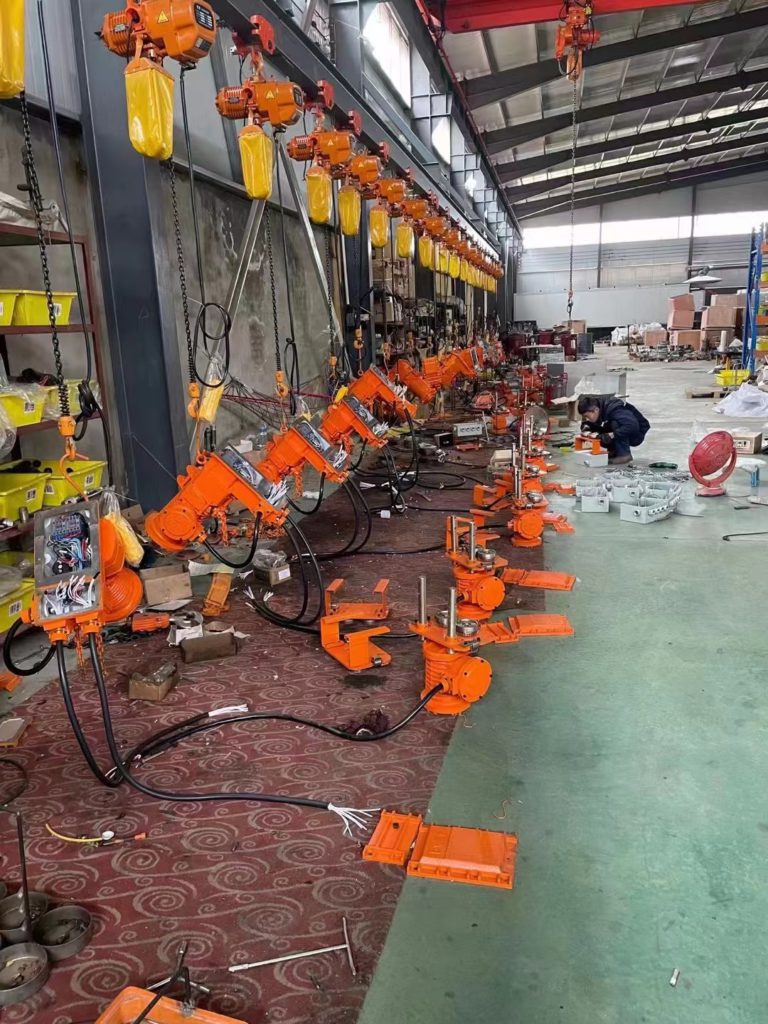
Hoist là những công cụ quan trọng trong mọi ngành liên quan đến việc nâng lớn vì chúng làm cho việc di chuyển các vật nặng an toàn và dễ dàng; có thể là trong sản xuất, xây dựng hoặc kho lưu trữ. Mặc dù là một công cụ cơ học, vận thăng, Giống như bất kỳ thiết bị cơ học nào khác, need periodical maintenance to ensure they are safe, có hiệu quả, and comply with safety regulations. Ví dụ, how often should hoists be serviced? The frequency of hoisting, the working environment, and the type of hoist were the main factors determining the response to this question. This article provides a systematic approach to hoist maintenance as it covers the best practices and standards, and explains such concepts as hoist maintenance, chuỗi tải làm việc, and chain safe working load. This article explores the best practices and standards for hoist maintenance and examines key concepts like hoist maintenance, chuỗi tải làm việc, và chain safe working load.
Understanding Hoist Maintenance Requirements
Hoist maintenance is essential not just for the longevity of the equipment but also for the safety of operators. Regular inspections and servicing can help identify wear and tear, prevent unexpected failures, and ensure that the hoist remains within its rated load capacity.
Key Elements of Hoist Maintenance:
- Visual inspection of chains, móc, brakes, and housing
- Lubrication of moving parts
- Checking electrical systems and controls
- Load testing and performance evaluation
- Verification of the chuỗi tải làm việc
Factors Influencing Maintenance Frequency
- Usage Rate: Hoists used daily under full load conditions require more frequent servicing than those used occasionally.
- Môi trường: Exposure to dust, Độ ẩm, Hóa chất, or extreme temperatures accelerates wear.
- Load Weight: Constantly operating at or near the chain safe working load may lead to faster degradation of components.
- Type of Hoist: Electric chain hoists may need more frequent electrical inspections compared to manual chain blocks.
Recommended Maintenance Schedule
Here’s a general guideline based on industry best practices:
| Maintenance Task | Frequency |
|---|---|
| Visual Inspection | Trước mỗi lần sử dụng |
| Functional Test | Weekly |
| Lubrication | Monthly or as recommended |
| Load Test | Annually |
| Full Preventive Maintenance | Mọi 3-6 months depending on usage |
Why Load Testing Is Critical
Load testing ensures the hoist can handle its rated capacity and continues to meet safety regulations. This process involves testing the equipment at or above its chuỗi tải làm việc to confirm operational integrity. It’s a fundamental part of comprehensive hoist maintenance.
Compliance With Industry Standards
OSHA, ASME, and ISO all have guidelines outlining the frequency and type of hoist inspections required. Non-compliance can result in fines, equipment seizure, or serious accidents. Integrating chain safe working load checks into your regular maintenance routine helps ensure your system adheres to these regulations.
Benefits of Regular Hoist Servicing
- Improved safety for workers and equipment
- Longer equipment life span
- Reduced downtime due to unexpected failures
- Lower total cost of ownership
- Compliance with legal and insurance requirements
Signs Your Hoist Needs Immediate Servicing
- Unusual noises during operation
- Slipping or jerky lifting motion
- Visible chain damage or deformation
- Overheating of electrical components
- Load drifting when lifted
Best Practices for Hoist Maintenance Management
- Keep detailed maintenance logs
- Train staff in basic hoist inspection
- Schedule regular inspections with certified technicians
- Always use genuine parts rated for your hoist model
Final Thoughts
To maintain performance, sự an toàn, and compliance, hoists should be inspected daily, function-tested weekly, and undergo preventive maintenance every 3 ĐẾN 6 months depending on usage. Critical components such as the chain and lifting mechanism should be checked against chuỗi tải làm việc và chain safe working load standards. Ultimately, routine hoist maintenance not only extends the life of your equipment but ensures a safe and compliant work environment.